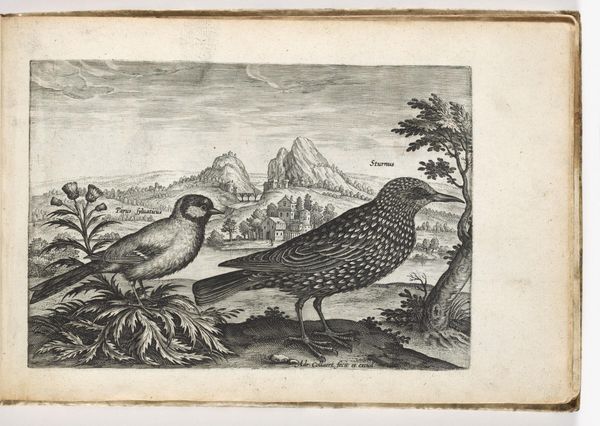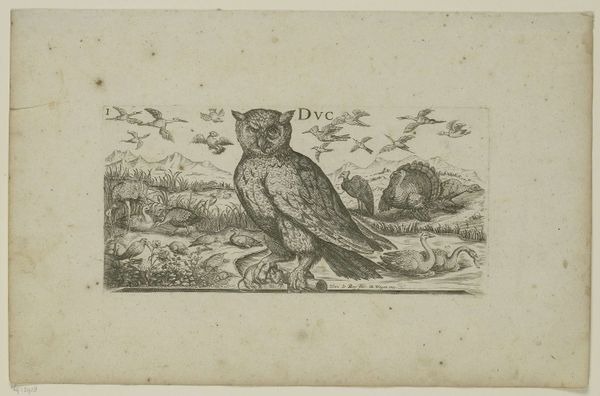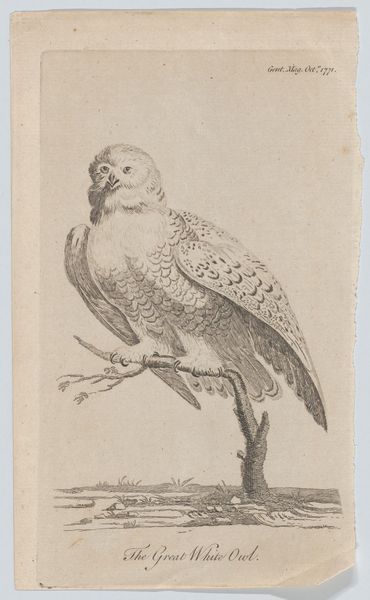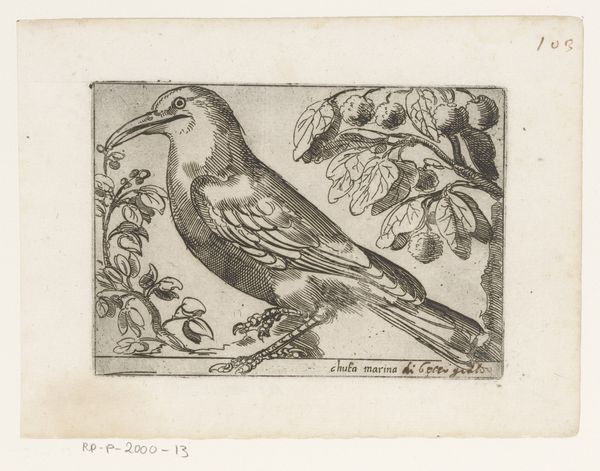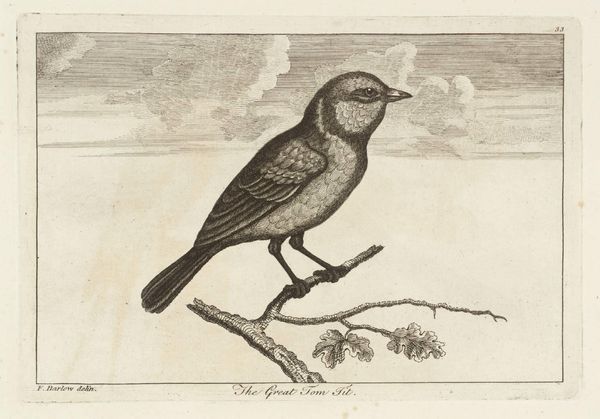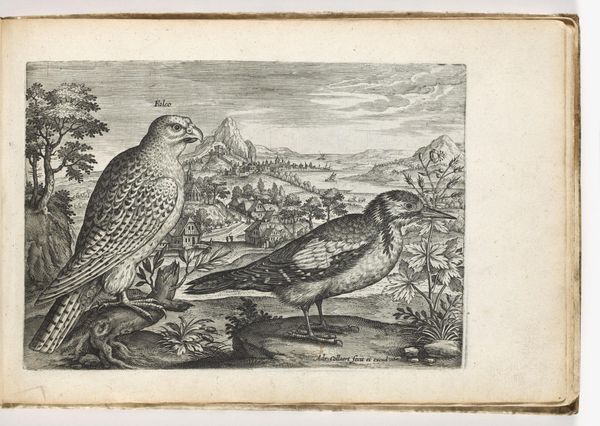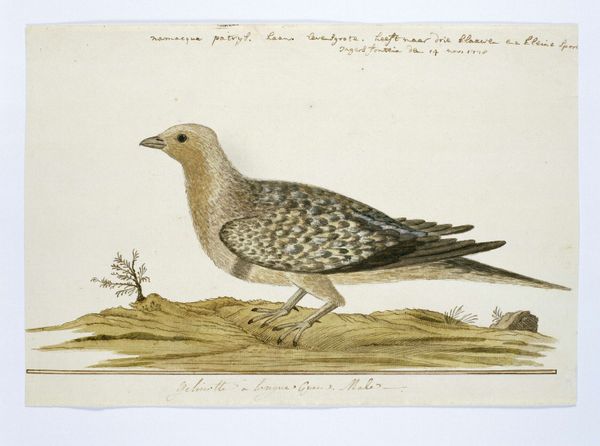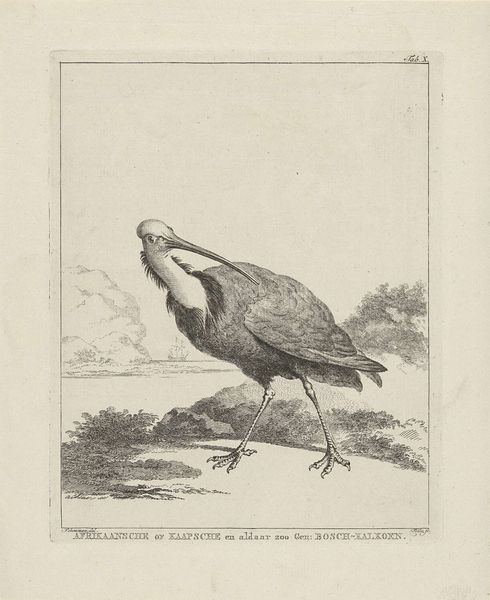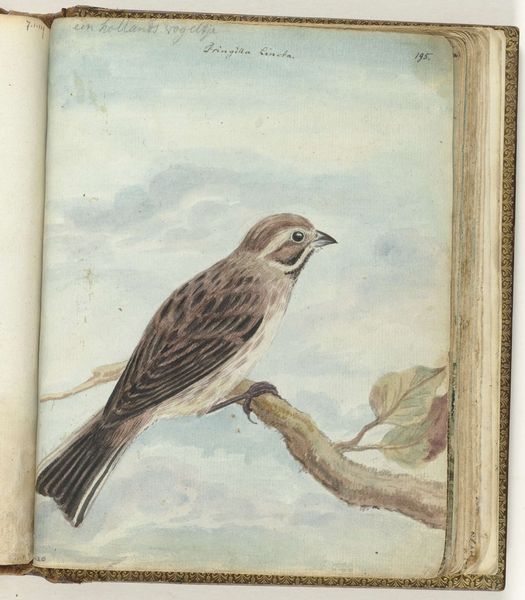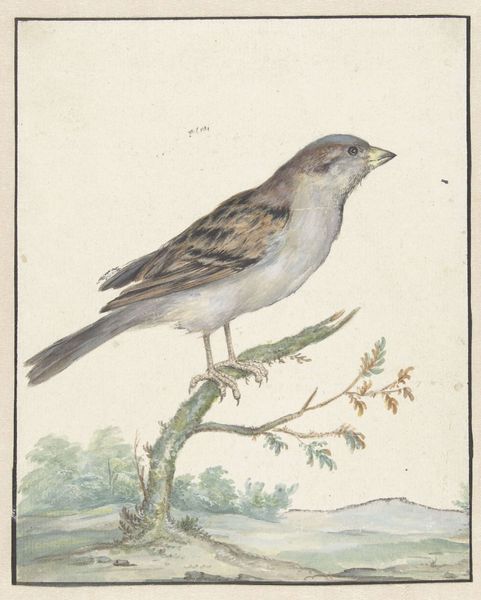
drawing, print, etching, engraving
#
pencil drawn
#
drawing
#
light pencil work
#
quirky sketch
#
baroque
# print
#
etching
#
pencil sketch
#
old engraving style
#
landscape
#
personal sketchbook
#
pen-ink sketch
#
sketchbook drawing
#
pencil work
#
sketchbook art
#
engraving
#
realism
Dimensions: height 200 mm, width 160 mm
Copyright: Rijks Museum: Open Domain
Editor: This is Simon Fokke's "Green Imperial-Pigeon," an etching from the 18th century, held at the Rijksmuseum. It reminds me of illustrations in old natural history books, but it feels almost… melancholic in its precise detail. What do you make of it? Curator: The power of these seemingly simple images lies in their enduring connection to how we perceive and categorize the natural world. What was once a scientific pursuit is now also a poignant reflection on what has been lost, or perhaps transformed. Do you see how the very act of depicting the bird imbues it with symbolic weight? Editor: I suppose so. It's not just *a* pigeon; it's *the idea* of a pigeon. The detail makes it seem very individual, but at the same time, it's also standing in for the species. Curator: Exactly. Fokke's choice of the etching medium itself links this image to a long lineage of scientific illustration and, dare I say, imperial ambition. Consider the act of naming— "Green Imperial-Pigeon." What does "Imperial" evoke for you? Editor: Authority, control... the British Empire, maybe? So, naming it "Imperial" elevates it beyond just a bird. It suggests claiming the natural world and organizing it in our own way. Curator: Precisely! These images served not only to document, but also to claim ownership, even if just through representation. Consider how our understanding of this creature might be influenced or altered by Fokke's choices about composition, line, or even the gaze of the bird. What emotional responses does this specific image invite, would you say? Editor: That's true; the bird seems calm, watchful. It makes me wonder about its real habitat. I had never considered an etching of a bird carrying that much weight. Curator: Indeed. And it is in these layers of cultural memory and inherited meaning that these images become so powerful. It transcends just art; it becomes about history, science, and cultural understanding. Editor: Thanks! That gives me a lot to think about for my paper on nature and artifice.
Comments
No comments
Be the first to comment and join the conversation on the ultimate creative platform.
